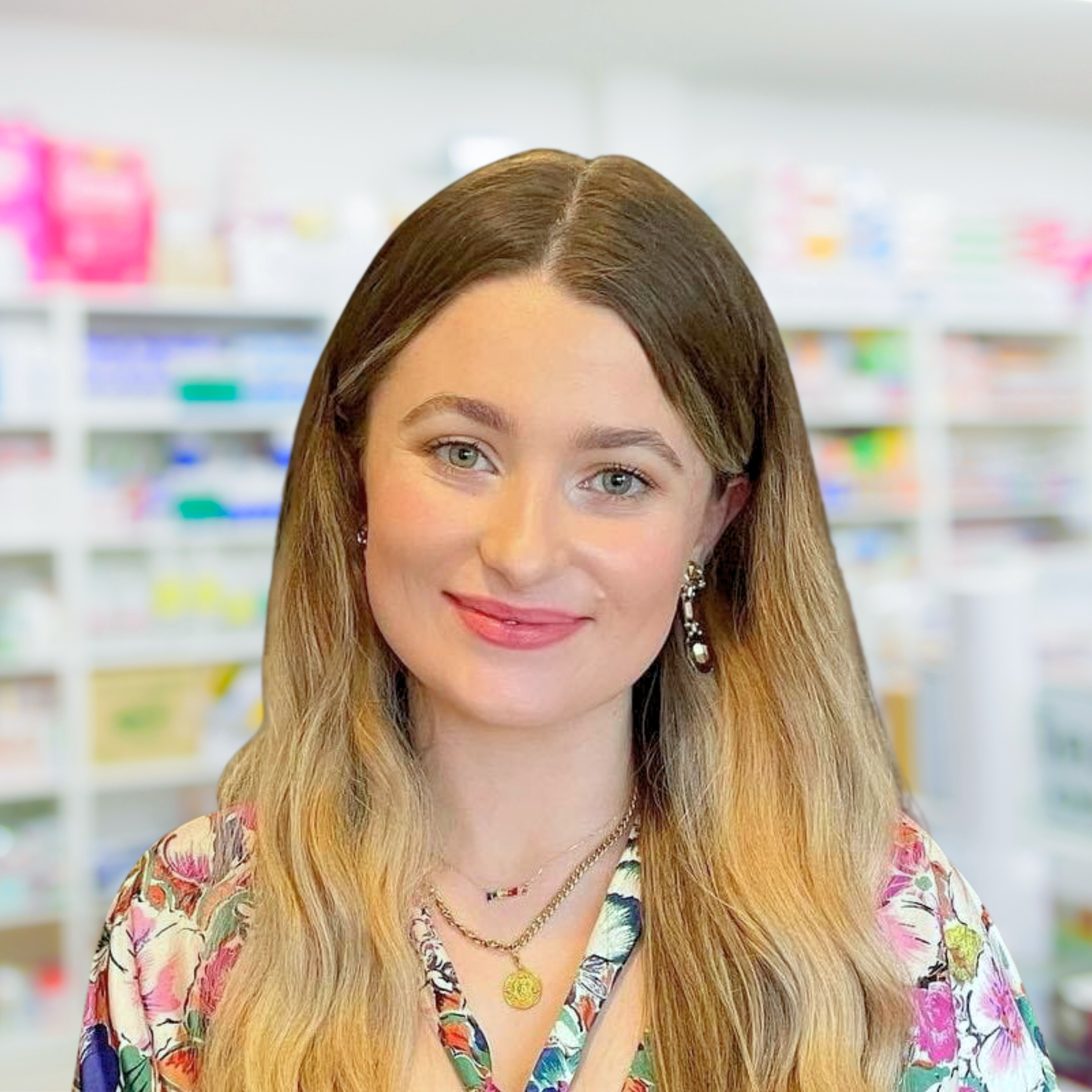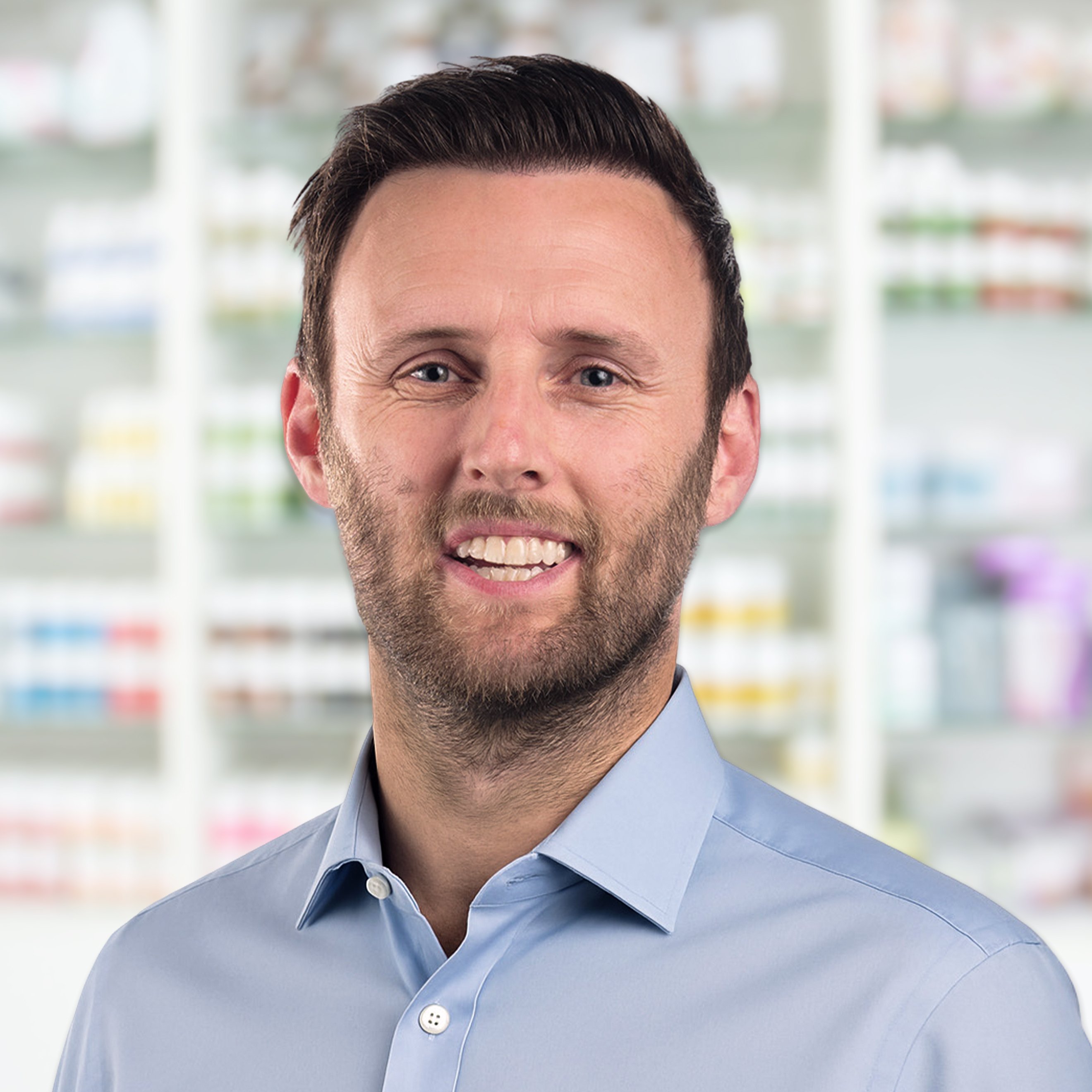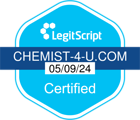Rosacea - Symptoms, Causes & Treatments

Rosacea (pronounced “roh-zay-sha”) is a chronic inflammatory skin condition that causes redness and burning across the cheeks, nose, forehead and chin.
Rosacea tends to come and go in flare-ups and can worsen over time if left untreated, resulting in further symptoms like pimples, thickened skin and even eye problems.
Whilst rosacea can affect anyone, it's believed to be more common in people with fair skin, particularly those prone to blushing, and tends to develop after the age of 30.
It's also typically more severe in men, despite being more frequently diagnosed in women.
There isn't a cure, but the right treatments can help manage the condition and keep flare-ups at bay.
Symptoms
The symptoms of rosacea develop over time, generally starting with facial redness and progressing to other symptoms if the condition is left untreated. All of the possible symptoms include:
- Redness or blushing across your cheeks, nose, forehead and chin (this may be harder to see on darker skin)
- Burning or stinging sensation when cleaning your face with water or skincare products
- Dry, sensitive or itchy skin
- Swelling
- Eye problems like blepharitis (ocular rosacea)
- Thickened skin, particularly on the nose (rhinophyma)

Types of rosacea
There are thought to be four ‘subtypes’ of rosacea, all of which range in severity and display different symptoms. People with rosacea may only ever experience the symptoms of one subtype, or their condition may progress onto other subtypes over time.
Subtype 1 (erythematotelangiectatic rosacea)
Erythematotelangiectatic rosacea (ETR) is the most common type of inflammatory rosacea. Symptoms include facial flushing across the nose, cheeks and chin, visible blood vessels and sensitive skin.
Subtype 2 (papulopustular rosacea)
Papulopustular rosacea, commonly referred to acne rosacea, includes acne-like symptoms such as breakouts, very red skin, oily skin and raised patches of skin called plaques. This type is most common in middle-aged women.
Subtype 3 (rhinophyma or phymatous rosacea)
Rhinophyma, sometimes known as phymatous rosacea, is a rarer type that refers to the thickening of skin on the nose (sometimes this affects the cheeks, chin and forehead too). The nose will typically appear thick, bumpy and bulbous.
Subtype 4 (ocular rosacea)
Ocular rosacea causes a range of symptoms that affect the eyes. Your eyes will likely sting or feel gritty, dry or itchy. Ocular rosacea can also cause watery or bloodshot and you could experience cysts, blurred vision and sensitivity to light.
Causes
Whilst the cause of rosacea remains unknown, there have been studies into the condition and there are some theories around its potential causes and risk factors.
Some experts have suggested that rosacea may be caused by abnormalities in the blood vessels of the face, potentially as a result of sun damage that has led to degeneration of the skin's elastic tissue and the dilation of the blood.
Research has also shown that external triggers can lead to the activation of molecules in the skin called peptides.
These peptides can affect the immune system, nerves and blood vessels of the skin and could lead to inflammation. These triggers may include:
- UV light
- Spicy food
- Alcohol
- Exercise
- Stress
- Heat and cold
Caffeine, cheese and hot drinks may also trigger a flare-up, so it could be worth avoiding these too.
Diagnosis
If you think you might be displaying any symptoms of rosacea, you should consider making an appointment with your GP. There isn't a medical test to diagnose people with rosacea - your doctor will simply take a look at your skin and ask questions about your symptoms.
Tests may be required to rule out other conditions with similar symptoms, like lupus or allergies.
If your rosacea is mild to moderate, your GP will be able to suggest potential treatments to help you manage the condition.
If your condition is severe, you may be referred to a dermatologist (a doctor who specialises in skin conditions).
When to speak to your doctor:
You should get an urgent appointment with your GP or call 111 if you have rosacea and you experience:
- Eye pain
- Blurred vision
- Sensitivity to light
- Red eyes
- A gritty feeling in your eye
These could indicate you’re suffering with keratitis, a complication of rosacea which can cause severe pain and corneal scarring if it isn’t treated urgently.
Treatment
Rosacea unfortunately can't be cured, but there are plenty of treatment options available to help manage and reduce the symptoms during a flare-up.
For mild facial redness, skincare products designed for rosacea-prone skin can help to calm the skin down, but further action may be needed if it can't be cleared up with skincare products.
Medical treatments
For moderate to severe rosacea, you may need to buy rosacea treatments on prescription.
Your GP or local healthcare team can provide prescription-strength rosacea treatments, or you can obtain them through an online prescriber like those on our team.
All you need to do is answer a quick online questionnaire and one of our prescribers will determine whether we’ve got a suitable option for you.
Your prescriber may recommend a course of oral antibiotics or topical treatments like creams and gels. These include metronidazole (Rozex, Metrogel), a type of drug called a nitroimidazole antibiotic which stops the growth of bacteria.
Brimonidine (Mirvaso) is another topical treatment, which works by narrowing the blood vessels in the applied area, therefore reducing rosacea redness on the face. Other treatments like topical ivermectin (Soolantra) and azelaic acid (Finacea) can also help to reduce symptoms.
IPL (intense pulsed light)
Another option is IPL (intense pulsed light) treatment which targets redness using flashes of very bright light. IPL is different to laser treatment in that it uses a range of light frequencies rather than just one.
IPL works by using specific wavelengths that are absorbed by red structures in the skin, like your blood and blood vessels. When the light is absorbed, it's converted into heat which then destroys the redness without harming the surrounding tissue.
IPL can be highly effective at reducing facial redness, but the downside is that it isn't usually available on the NHS, so it can be expensive. You'll also need to attend repeat appointments to maintain the effectiveness of IPL treatment.
Living with rosacea
Rosacea can be difficult to live with, especially if it's severe. Exploring treatment options with your GP or dermatologist will help you to live with the condition long-term. Don't worry if one treatment doesn't work for you - chances are, you'll just need to try a different one.
Lifestyle tips
Identifying your triggers is also a helpful way to manage rosacea on a long-term basis. While there are a range of potential triggers, there could be one thing in particular that causes your skin to flare up. This could be exercise, stress, certain skincare products or even hot or cold weather. Keeping a diary of your symptoms can help you to find out what your triggers are.
It's also important to be cautious with your skin whilst living with rosacea. As UV rays are a trigger for rosacea, you should use SPF 50 every day, making sure to choose a broad-spectrum sunscreen that protects against both UVA and UVB rays.
You should also make sure to use skincare products designed for people with sensitive skin. That means choosing fragrance-free soaps and moisturisers or even using a soap substitute containing an emollient. Keeping your skincare routine as simple as possible is also a good idea.
Rosacea doesn't only affect your skin; it can lower your confidence and have a profoundly negative impact on your mental health too. If you're struggling with low self-esteem following your diagnosis, don't be afraid to turn to your friends, family or even a doctor or therapist for support.
Dietary changes
Some people with rosacea find that certain foods or drinks cause their condition to flare up.
Spicy foods, alcohol, caffeine, cheese and hot drinks are all thought to be triggers for rosacea, but it could be something completely different for you. This is why it's best to keep a diary to track what causes your flare-ups.
It's thought that omega-3 fatty acids could help to soothe dry and gritty eyes in people with ocular rosacea.
Whilst research is limited, including more fish in your diet or taking an omega-3 supplement could be worth a try.
Another theory is that rosacea could be caused by a bacterial imbalance in the gut. It could be helpful to try foods and drinks containing probiotics, like yoghurt, kefir and fermented foods, or simply a probiotic supplement, to see if these help your rosacea flare-ups.





